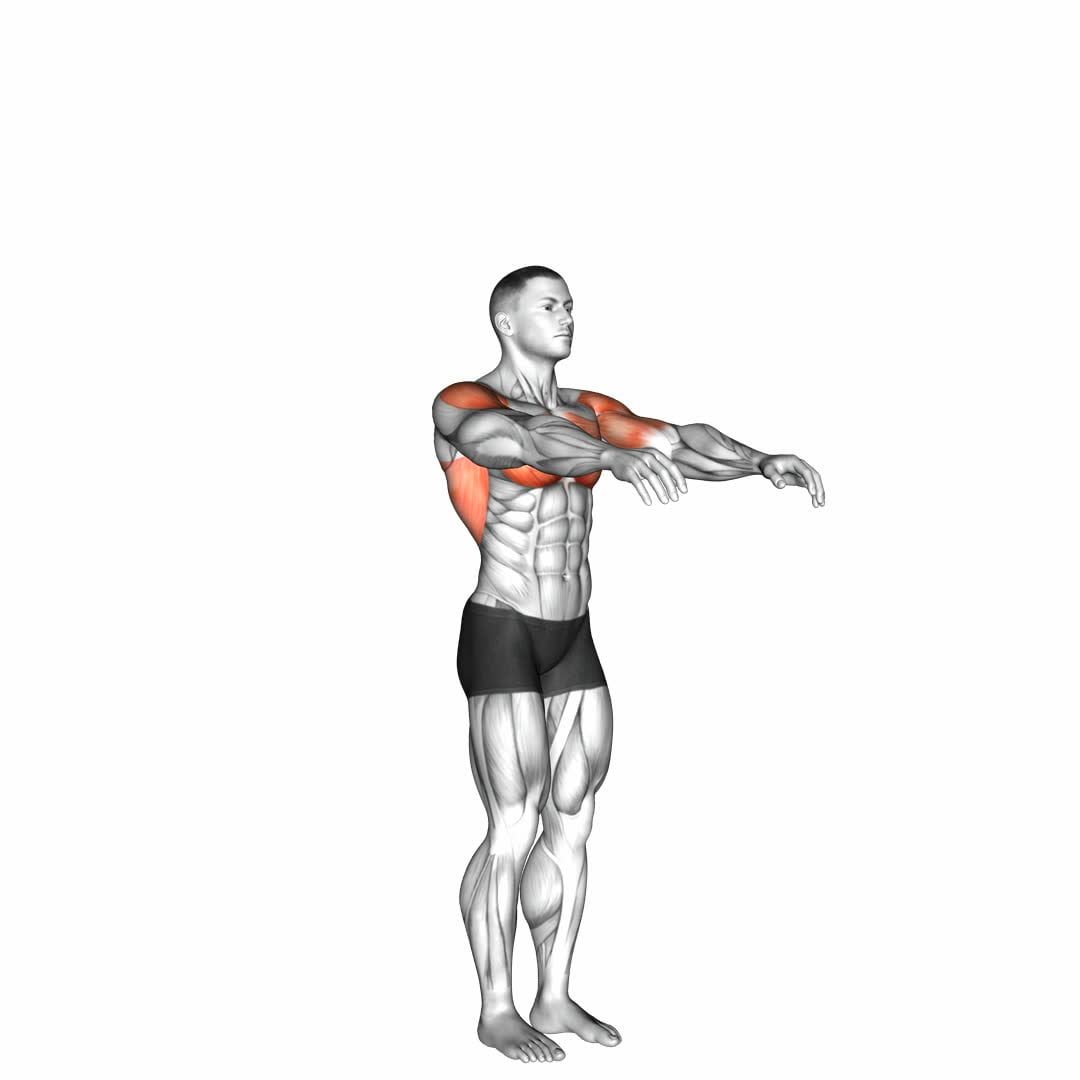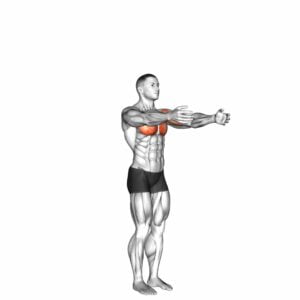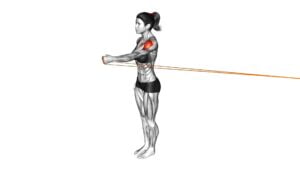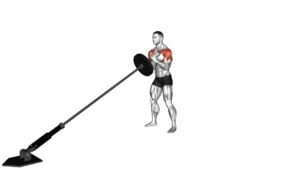Shoulder – Flexion – Video Exercise Guide & Tips

Are you looking to improve your shoulder flexion? This video exercise guide and tips article (277812) has got you covered.
Watch This Exercise Video
Learn the benefits of shoulder flexion, proper form and technique, variations to try, and common mistakes to avoid.
Maximize your results with evidence-based tips. Get ready to strengthen and increase your shoulder range of motion.
Let's dive in!
Key Takeaways
- Increased mobility and improved range of motion
- Reduced risk of shoulder injuries
- Strengthening and stretching of shoulder muscles and tendons
- Prevention of shoulder impingement
Benefits of Shoulder Flexion
One benefit of shoulder flexion is increased mobility. Shoulder flexion exercises can help improve the range of motion in your shoulders, allowing you to perform daily activities with ease and reducing the risk of shoulder injuries.
When you perform shoulder flexion exercises, such as arm raises or shoulder presses, you're actively engaging the muscles responsible for lifting your arms overhead. This repetitive movement helps to stretch and strengthen the muscles and tendons in your shoulders, promoting increased flexibility and mobility.
Regularly incorporating shoulder flexion exercises into your workout routine can have numerous benefits for your shoulder mobility. These exercises target the deltoids, pectoralis major, and biceps muscles, which are crucial for shoulder movement. By strengthening and stretching these muscles, you can improve your ability to reach overhead, lift objects, and perform various upper body movements.
Furthermore, shoulder flexion exercises can help prevent shoulder impingement, a common condition characterized by the compression of the tendons and bursa in the shoulder joint. By strengthening the muscles around the shoulder joint, you can create better stability and support, reducing the risk of impingement and related shoulder pain.
Proper Form and Technique
To ensure proper form and technique during shoulder flexion exercises, use a firm grip on the weights. This will help you maintain control and stability throughout the movement.
One of the most common errors in shoulder flexion exercises is using momentum to lift the weights instead of relying on the strength of your shoulder muscles. This can lead to an ineffective workout and increase the risk of injury. To avoid this, focus on performing the exercise slowly and with control, using only the strength of your shoulders to lift the weights.
Additionally, proper alignment is crucial in shoulder flexion exercises. Keep your back straight, shoulders relaxed, and core engaged throughout the movement. Avoid arching your back or hunching your shoulders, as this can strain the muscles and lead to discomfort or injury. By maintaining proper alignment, you'll maximize the effectiveness of the exercise and minimize the risk of injury.
Remember to always listen to your body and stop if you experience any pain or discomfort.
Variations of Shoulder Flexion
To further challenge your shoulder flexion exercises and target different muscles, you can incorporate variations that require different movements and positions. Shoulder flexion variations offer modifications and progressions to cater to different fitness levels.
One option is to perform shoulder flexion with dumbbells instead of using just your body weight. Holding a dumbbell in each hand while raising your arms overhead increases the resistance and intensifies the exercise.
Another variation is the seated shoulder flexion exercise, where you sit on a bench or stability ball and perform shoulder flexion with or without weights. This variation engages your core muscles and challenges your balance.
For those looking for a more advanced variation, the standing shoulder flexion exercise with a resistance band can be effective. By attaching one end of the resistance band to a sturdy anchor and holding the other end in your hand, you can perform shoulder flexion against the band resistance, targeting your shoulder muscles in a different way.
Transitioning from these variations to the subsequent section about common mistakes to avoid, it's crucial to maintain proper form and technique throughout all shoulder flexion exercises to prevent injury and maximize effectiveness.
Common Mistakes to Avoid
Your form and technique during shoulder flexion exercises are crucial for preventing injury and maximizing effectiveness. To ensure you get the most out of your workouts and avoid common mistakes, keep the following points in mind:
- Overarching your lower back: Avoid arching your lower back excessively during shoulder flexion exercises, as this can put unnecessary strain on your spine and increase the risk of injury. Maintain a neutral spine position throughout the movement.
- Using momentum: Swinging your arms or using momentum to lift the weight can take away from the targeted muscles and reduce the effectiveness of the exercise. Focus on controlled movements and use a weight that allows you to maintain proper form.
- Neglecting proper warm-up: Skipping a proper warm-up can increase the risk of injury during shoulder flexion exercises. Take the time to warm up your shoulder joints and muscles with dynamic stretches and mobility exercises.
By avoiding these common mistakes, you can reduce the risk of injury and ensure that you're getting the most out of your shoulder flexion exercises.
Now, let's move on to some tips for maximizing your shoulder flexion results.
Tips for Maximizing Shoulder Flexion Results
To maximize your shoulder flexion results, incorporate resistance training exercises that specifically target the muscles involved in shoulder flexion.
These exercises will help improve your shoulder mobility and increase flexibility in the muscles responsible for shoulder flexion. One effective exercise is the dumbbell front raise. Stand with your feet shoulder-width apart, holding a dumbbell in each hand. Keep your arms straight and lift the dumbbells in front of you until they're at shoulder height. Lower the dumbbells back down and repeat for a set number of reps.
Another exercise that targets shoulder flexion is the seated overhead press. Sit on a bench with a dumbbell in each hand, palms facing forward. Raise the dumbbells up to shoulder height, then press them overhead until your arms are fully extended. Lower the dumbbells back down and repeat.
In addition to resistance training exercises, incorporating stretches for shoulder flexion can also help improve your results. One effective stretch is the shoulder flexion stretch. Stand or sit upright and interlace your fingers behind your back. Gently lift your hands up towards the ceiling, keeping your arms straight. Hold the stretch for 20-30 seconds, then release. Repeat the stretch for a few sets.
Frequently Asked Questions
Can Shoulder Flexion Exercises Help Improve Posture?
Shoulder flexion exercises can indeed help improve your posture. By engaging the muscles in your shoulder and upper back, these exercises promote better alignment and support for your spine.
When you perform shoulder flexion exercises regularly, you strengthen the muscles responsible for maintaining good posture, reducing the likelihood of slouching or rounding of the shoulders.
This can have a positive impact on your overall posture and help prevent common issues such as neck and back pain.
Are There Any Specific Shoulder Flexion Exercises That Can Be Done Without Equipment?
To improve shoulder mobility, there are specific shoulder flexion exercises that can be done without equipment. These exercises target the muscles responsible for shoulder flexion and can help increase range of motion and improve overall posture.
How Often Should Shoulder Flexion Exercises Be Performed for Optimal Results?
To achieve optimal results, you should perform shoulder flexion exercises regularly. Shoulder flexion benefits include improved range of motion and increased shoulder strength.
The technique involves raising your arms forward and upward, keeping them straight. Aim to perform these exercises at least two to three times a week.
However, it's important to listen to your body and not overdo it. Consult with a healthcare professional or a certified trainer for personalized guidance.
Are There Any Precautions or Contraindications to Consider Before Attempting Shoulder Flexion Exercises?
Before attempting shoulder flexion exercises, it's important to consider precautions and contraindications. Certain conditions such as shoulder impingement, rotator cuff tears, and shoulder instability may require modifications or avoidance of these exercises.
It's advisable to consult with a healthcare professional or a qualified trainer to assess your specific situation and determine the appropriateness of shoulder flexion exercises.
Can Shoulder Flexion Exercises Help Alleviate Shoulder Pain or Injury?
Shoulder flexion exercises can be beneficial in alleviating shoulder pain or injury. By engaging in these exercises, you're actively working on rehabilitating your shoulder and promoting its strength and flexibility.
Athletes, in particular, can benefit from shoulder flexion exercises as they help improve shoulder stability and range of motion, which are essential for optimal performance in sports.
Incorporating these exercises into your routine can aid in the recovery process and enhance your overall shoulder health.
Conclusion
In conclusion, shoulder flexion is a beneficial exercise for improving the flexibility and strength of the shoulder joint. By following proper form and technique, variations can be incorporated to target different muscles and enhance overall shoulder function.
Avoiding common mistakes and implementing tips for maximizing results can further optimize the benefits of shoulder flexion. Regular practice of this exercise can lead to improved range of motion, increased stability, and reduced risk of shoulder injuries.

Author
Years ago, the spark of my life’s passion ignited in my mind the moment I stepped into the local gym for the first time. The inaugural bead of perspiration, the initial endeavor, the very first surge of endorphins, and a sense of pride that washed over me post-workout marked the beginning of my deep-seated interest in strength sports, fitness, and sports nutrition. This very curiosity blossomed rapidly into a profound fascination, propelling me to earn a Master’s degree in Physical Education from the Academy of Physical Education in Krakow, followed by a Sports Manager diploma from the Jagiellonian University. My journey of growth led me to gain more specialized qualifications, such as being a certified personal trainer with a focus on sports dietetics, a lifeguard, and an instructor for wellness and corrective gymnastics. Theoretical knowledge paired seamlessly with practical experience, reinforcing my belief that the transformation of individuals under my guidance was also a reflection of my personal growth. This belief holds true even today. Each day, I strive to push the boundaries and explore new realms. These realms gently elevate me to greater heights. The unique combination of passion for my field and the continuous quest for growth fuels my drive to break new ground.



